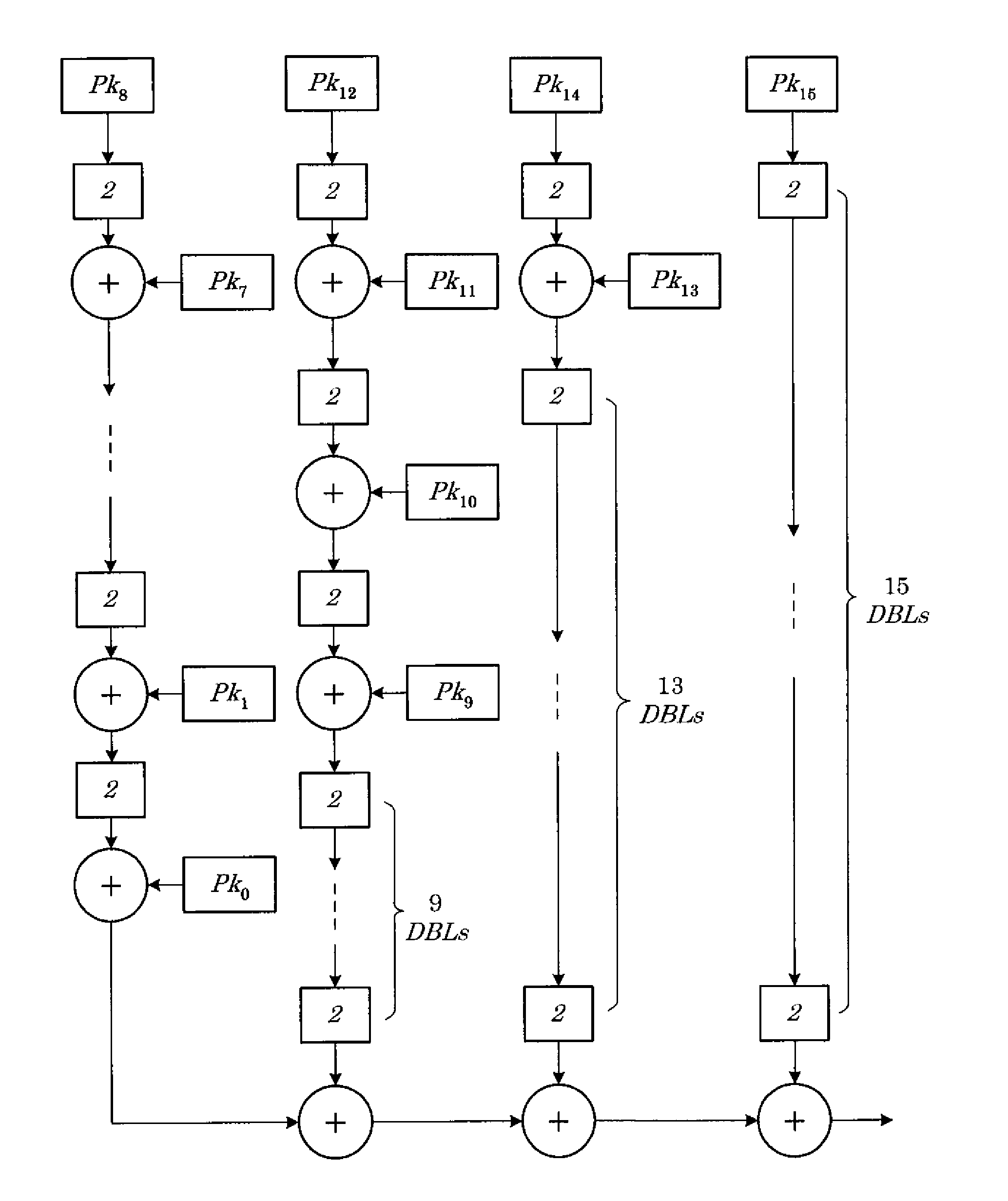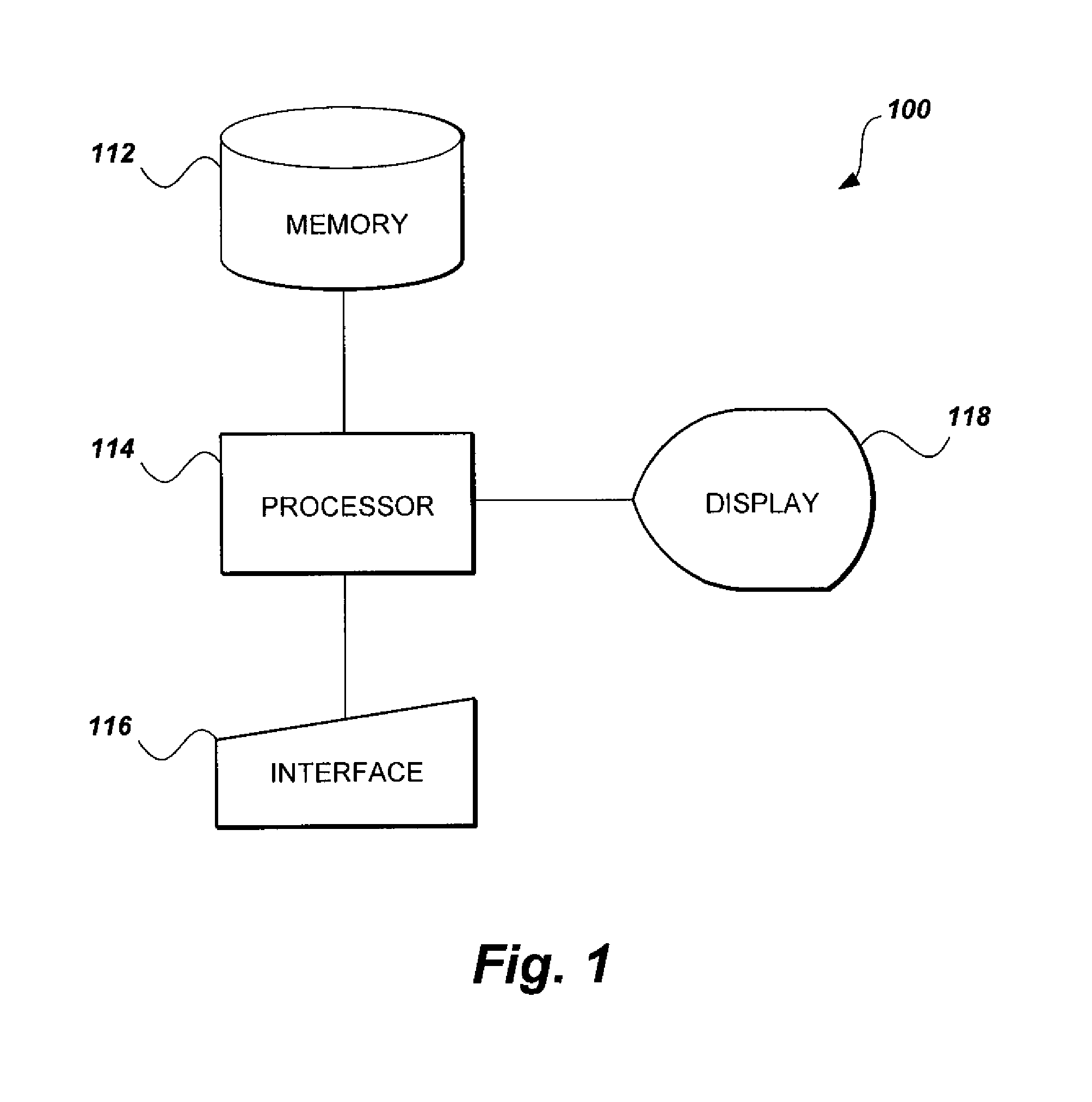Method for generic-point parallel elliptic curve scalar multiplication
a scalar multiplication and parallel elliptic curve technology, applied in the field of cryptographic systems and methods, can solve the problems of slow sequential scalar multiplication methods for high-performance end servers, no significant breakthroughs in determining weaknesses, and inability to solve problems such as ecc to become a serious challenger to rsa and elgamal cryptosystems, so as to speed up scalar multiplication and increase the speed and efficiency of scalar multi
- Summary
- Abstract
- Description
- Claims
- Application Information
AI Technical Summary
Benefits of technology
Problems solved by technology
Method used
Image
Examples
Embodiment Construction
[0026]The present invention is a method for generic-point parallel elliptic curve scalar multiplication. The method for generic-point parallel elliptic curve scalar multiplication replaces sequential pre-computations for conventional elliptic curve scalar multiplication with post-computations that may be performed in parallel in order to speed up computations, particularly for high-performance end servers that face demand from an increasing number of customers. The scalar integer k is partitioned into u partitions that can be processed in parallel by u processors using the binary method. Post-computations are then distributed on u−1 processors to be performed in parallel. The points that result from processing these key partitions with the post-computations are finally assimilated or summed (with adjustment to the appropriate power of base 2 according to the columnar position of the partition in the full binary representation of the scalar integer) to produce scalar multiplication k...
PUM
 Login to View More
Login to View More Abstract
Description
Claims
Application Information
 Login to View More
Login to View More - R&D
- Intellectual Property
- Life Sciences
- Materials
- Tech Scout
- Unparalleled Data Quality
- Higher Quality Content
- 60% Fewer Hallucinations
Browse by: Latest US Patents, China's latest patents, Technical Efficacy Thesaurus, Application Domain, Technology Topic, Popular Technical Reports.
© 2025 PatSnap. All rights reserved.Legal|Privacy policy|Modern Slavery Act Transparency Statement|Sitemap|About US| Contact US: help@patsnap.com



